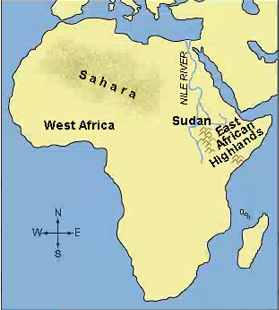题目解析:
【题目翻译】第2段提到了撒哈拉以南非洲从公元前5000年到3000年的发展情况,但除了哪个以外?
A撒哈拉沙漠干涸了。
B古埃及文明开始沿尼罗河形成。
C当牧牛人到达时,东非高地的居民放弃了狩猎。
D牧民们穿过大草原地带,在东非高地定居。
【判定题型】:根据题干中出现的大写“EXCEPT”/"NOT" 等其他明显表示否定的词,可以判定本题为否定事实信息题,需要找出与原文信息不符的那个答案。
【关键词定位】:根据题干关键词“5000 to 3000B.C.”定位于“By 3000 B.C., just as ancient Egyptian civilization was coming into being along the Nile, they had settled in the heart of the East African highlands far to the south. ”,可以将出题范围锁定在Passage 2 。
【选项分析】
A选项:撒哈拉地区干涸了。第二段第一句说“As the Sahara dried up after 5000 B.C.……”这句话证明A选项符合原文,故A选项排除。
B选项:古代埃及文明在尼罗河流域发源。第二段第2句说“By 3000 B.C., just as ancient Egyptian civilization was coming into being along the Nile……”这句话证明B选项符合原文,故B选项排除。
C选项:当游牧民族到来的时候,东非高地的原住民放弃了狩猎。原文说“The highlands were inhabited by hunter-gatherers living around mountains near the plains until about 3300 B.C., when the first cattle herders appeared.”这句话说直到大约公元前3300年,第一批牧牛人出现时,高地上居住着狩猎采集者,他们居住在平原附近的山区。但是文中没有提到这些原住民在游牧民族到来后就放弃了狩猎,故C选项在文中未提及,为正确答案。
D选项:游牧民族穿过了稀树草原带,在东非高地定居。对应第二段第1、2句“pastoral peoples (cattle herders) moved southward along major watercourses into the savanna belt of West Africa and the Sudan……settled in the heart of the East African highlands far to the south.”证明D选项是符合原文的,故D选项排除。


 At the end of the Pleistocene (around 10,000 B.C.), the technologies of food production may have already been employed on the fringes of the rain forests of western and central Africa, where the common use of such root plants as the African yam led people to recognize the advantages of growing their own food. The yam can easily be resprouted if the top is replanted. This primitive form of "vegeculture" (cultivation of root and tree crops) may have been the economic tradition onto which the cultivation of summer rainfall cereal crops was grafted as it came into use south of the grassland areas on the Sahara's southern borders.
At the end of the Pleistocene (around 10,000 B.C.), the technologies of food production may have already been employed on the fringes of the rain forests of western and central Africa, where the common use of such root plants as the African yam led people to recognize the advantages of growing their own food. The yam can easily be resprouted if the top is replanted. This primitive form of "vegeculture" (cultivation of root and tree crops) may have been the economic tradition onto which the cultivation of summer rainfall cereal crops was grafted as it came into use south of the grassland areas on the Sahara's southern borders.